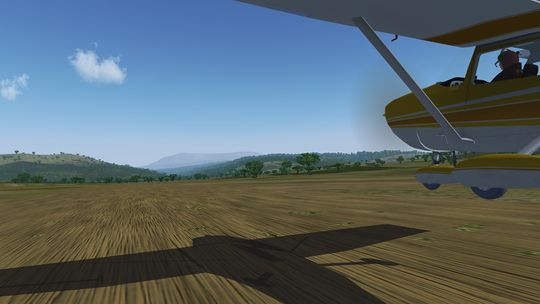Emergency approach training
(Redirected from Emergency Approach)
Jump to navigation
Jump to search
Emergency approach training develops the accuracy, judgment, planning, technique, and confidence of the student when little or no power is available in an emergency approach and landing.
Aim of emergency approach training
The Emergency Approach training should train/teach you...
- Prompt establishment of the best glide airspeed and the recommended configuration.
- How to select a suitable emergency landing area.
- Planning and execution of approach to the selected landing area.
- Use of emergency checklist.
- Importance of attempting to determine reason for the malfunction.
- Importance of dividing attention between flying the approach and accomplishing emergency checklist.
- Techniques that can be used to compensate for undershooting or overshooting selected emergency landing area.
Schedule
| Maneuver | Duration | Time | |
|---|---|---|---|
| 1 | Pre-flight instruction | 10 Minutes | 0:00 - 0:10 |
| 2 | Travel to training area | 10 Minutes | 0:10 - 0:20 |
| 3 | Instructor Demonstration | 10 Minutes | 0:20 - 0:30 |
| 4 | Student Practice | 20 Minutes | 0:30 - 0:50 |
| 5 | Return from practice area | 10 Minutes | 0:50 - 1:00 |
| 6 | Post-flight Review | 10 Minutes | 1:00 - 1:10 |
Total time: 1:10
Equipment
You will need a functional aircraft, a free practice area and airport and an instructor
Tasks
Actions by the instructor
- Conduct preflight training on the elements of an emergency approach.
- Demonstrate emergency approach.
- Conduct post flight briefing.
Actions by the student
- Ask questions, review homework.
- Perform preflight.
- Observe demonstrations.
- Perform IAW PTS (in accordance with practical test standards).
Completion standards
The student has to perform Emergency Approach IAW the PTS.
Common errors
These errors can lead to fail in the Emergency Approach test
- Failure to maintain Best Glide Speed.
- Improper airplane configuration.
Checklist for flight
A. Lesson Requirements
- Task: Perform an emergency approach and landing.
- Condition: Given a functional aircraft.
- Standard: IAW the PTS.
- Exhibits knowledge of the elements related to emergency approach and landing procedures.
- Analyzes the situation and selects an appropriate course of action.
- Establishes and maintains the recommended best-glide airspeed, ±10 knots.
- Selects a suitable landing area.
- Plans and follows a flight pattern to the selected landing area considering altitude, wind, terrain, and obstructions.
- Prepares for landing, or go-around, as specified by the examiner.
- Follows the appropriate checklist.
B. Identify the most important elements
- Fly the plane.
- Best glide speed.
- Identify landing area.
- Student check
- What is the best glide speed in this airplane? _______
C. Identify common errors
- Failure to maintain best glide speed. Pitch for airspeed, this is especially critical when you have no power.
- Failure to reach the landing area. Pick a better landing area, fly the plane. You may have to adjust your speed, but don’t stall.
- Failure to use the checklists. Once you have the plane under control, start troubleshooting.
D. Perform an emergency approach
- Get best glide speed.
- Identify landing area, begin moving toward it.
- Troubleshoot.
- fuel on correct tank
- fullest or both
- boost pumps on
- mixture rich
- carb heat on
- flaps up
- gear up
- 7700 on transponder, notify ATC (121.5 or current ATC freq)
- Set up for landing.
- Extend gear and flaps when landing assured. (Examiner may end here)
- Prior to landing open doors.
- Land.
Used abbreviations
- ATC
- Air traffic control
- IAW
- In accordance with
- PROC
- Procedure
- PTS
- Practical test standards
